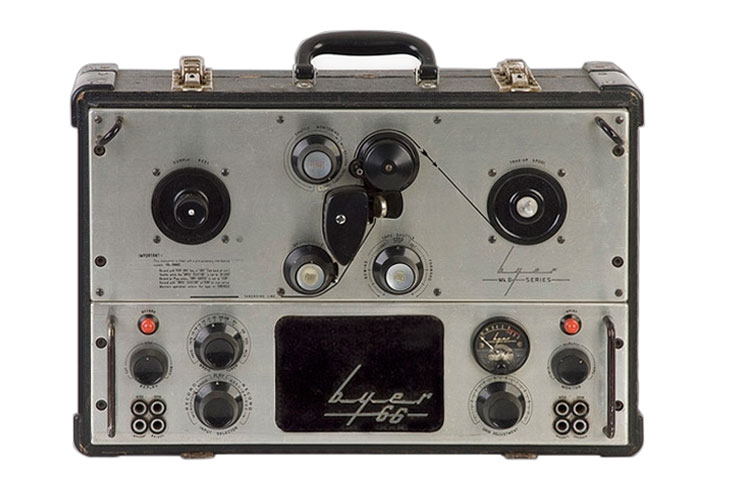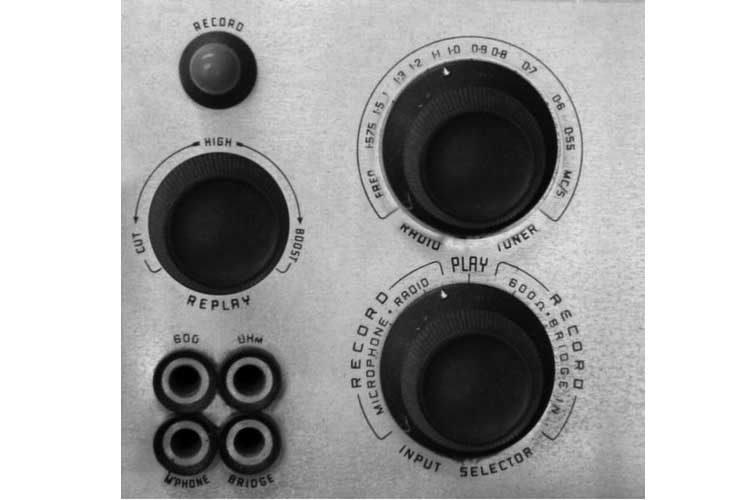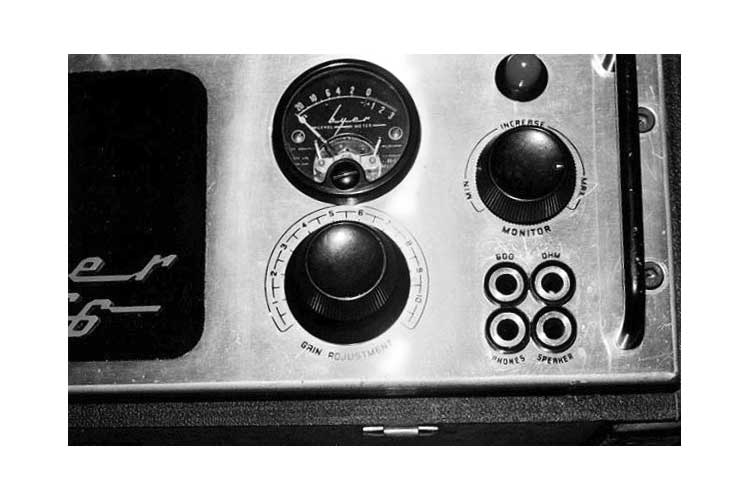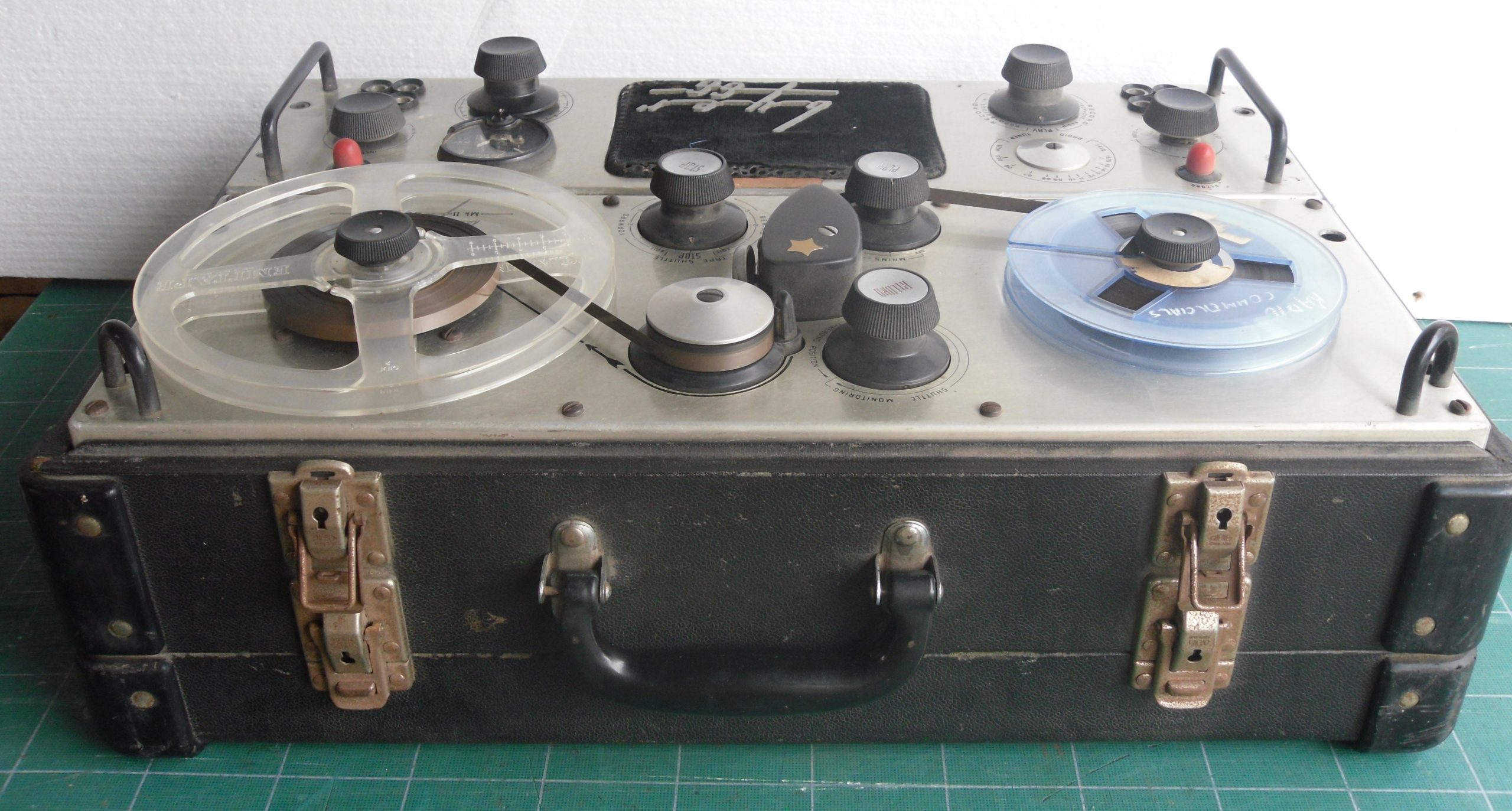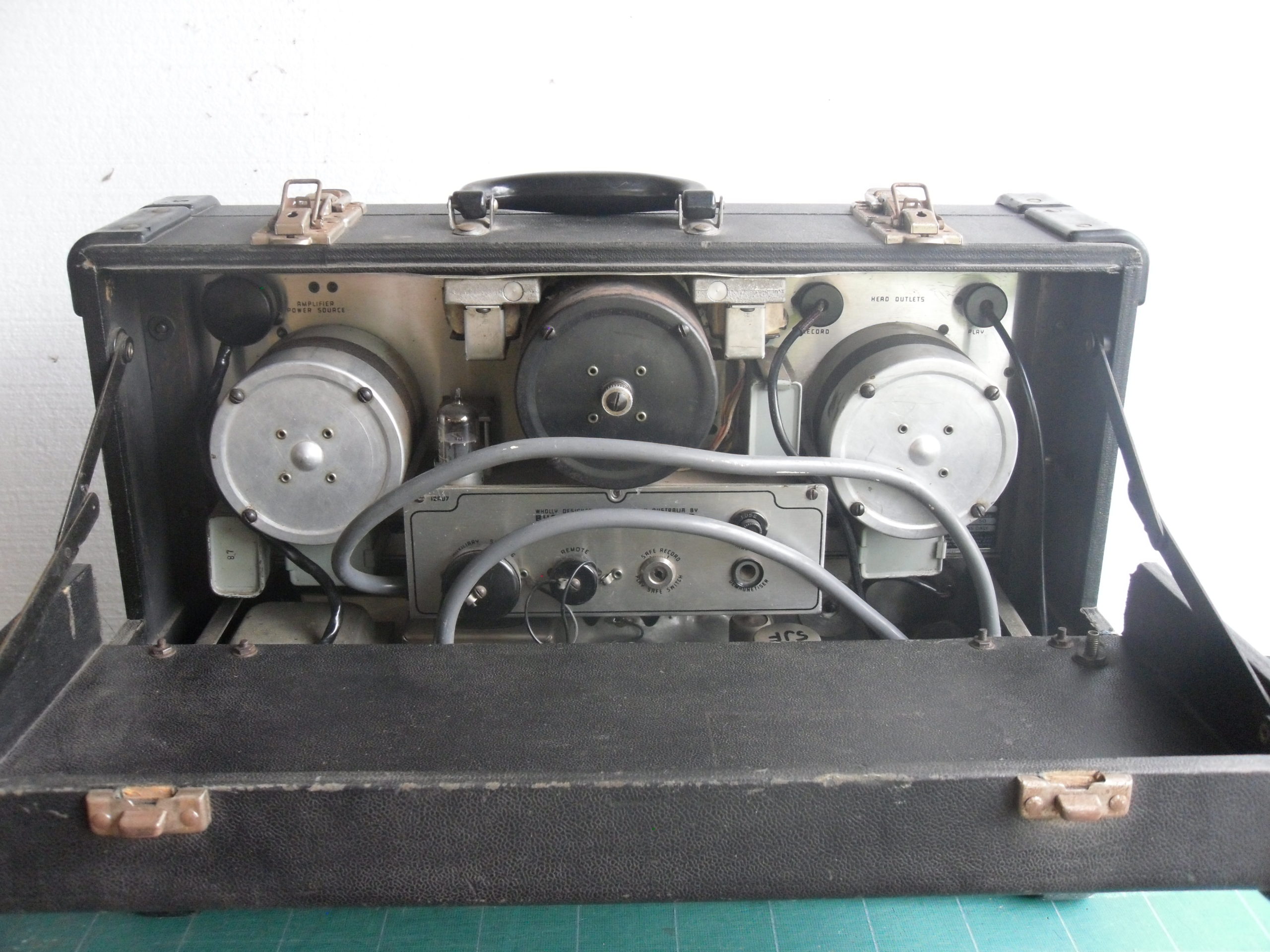Technical Details
Brand: Byer
Model:66
Category:Vintage
Application:Semi-Pro
Electronics:Tube
Equalization:IEC
Country of Manufacture:Australia
Tracks:1/2 Rec/PB
Speeds: 3 3/4, 7 1/2
Max Reel Size("): 7"
Number of heads: 3
Head Composition: Permalloy
Head Configuration: Mono - Full Track
# Motors: 3
Auto Reverse?:No
Voltage(s): 220-240v
Outputs: XLR Balanced, RCA
Frequency Response:35 - 12,000 cps ± 4dB at 7½ ips
Wow and Flutter:better than 0.2%
Signal-to-Noise Ratio:45dB unweighted at normal recording level
Sound quality rating:6 / 10
Long-term reliability rating: 6/ 10
Additional Details
Description
The Byer 66 first appeared in 1956 and remained in production until the early 1960s. When Byer Industries was bought out by Rola (Aust.) Pty. Ltd. in late 1957, production of the “66” continued under the Byer badge for a few years before Rola put its own name on the machine.
The “66” was very much a semi-professional machine, designed primarily for the broadcast, educational and government markets. Features included a three-motor beltless drive, (direct capstan drive meant low wow & flutter), three heads, solenoid controlled push button operation, variable winding speed, full editing facilities including a shuttle control and tape lifters, bias adjustment and professional-type 600 ohm balanced input and output sockets. The “66” could be supplied with any two adjacent speeds from 17/8 to 120 ips, most commonly 7½ and 3¾ ips.
A built-in AM radio tuner, remote control for STOP, PLAY, and RECORD functions and an auxiliary adaptor unit to accommodate up to 10½” reels were available as optional extras.
The machine was extremely sturdy with an almost bullet-proof case. The rear of the case folded out, allowing the recorder to be tilted back at a convenient operational angle as well as providing ventilation for the electronics. The slanted S –shaped tape path facilitated fast threading.
Price when new in Australia was £245. 6s – a considerable amount in 1956. These recorders were predominantly found in radio stations, schools and other government institutions and rarely used for domestic hi-fi.

| 1. Tape over-run switch. | 17. Pressure roller. |
| 2. Input selector switch. | 18. Cover disc. |
| 3. Unbalanced bridging input. | 19. Head shield. |
| 4. Microphone input. | 20. Tape lift pin. |
| 5. Balanced 600 ohm input. | 21. “STOP” push button. |
| 6. High frequency boost/cut. | 22. Spool cap. |
| 7. Radio tuner dial. | 23. Take-up spool. |
| 8. “RECORD” indicator. | 24. Tape shuttle control. |
| 9. Power switch and speed selector. | 25. “Mains” indicator. |
| 10. Spool cap. | 26. Level meter. |
| 11. “PLAY” push button. | 27. Monitor volume control. |
| 12. Triple head assembly. | 28. Balanced 600 ohm output. |
| 13. Supply reel. | 29. External speaker output. |
| 14. Shuttle monitoring control. | 30. Headphone output. |
| 15. “RECORD” push button. | 31. Gain adjustment. |
| 16. Capstan. | 32. Monitor speaker. |


